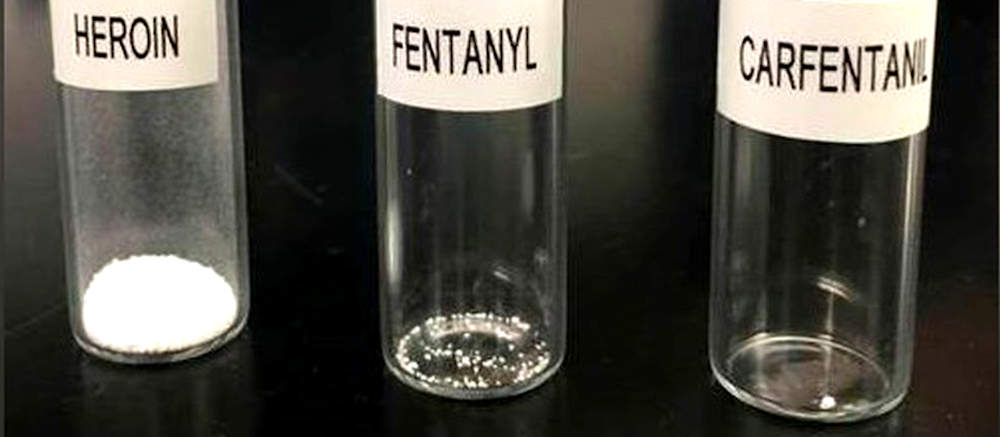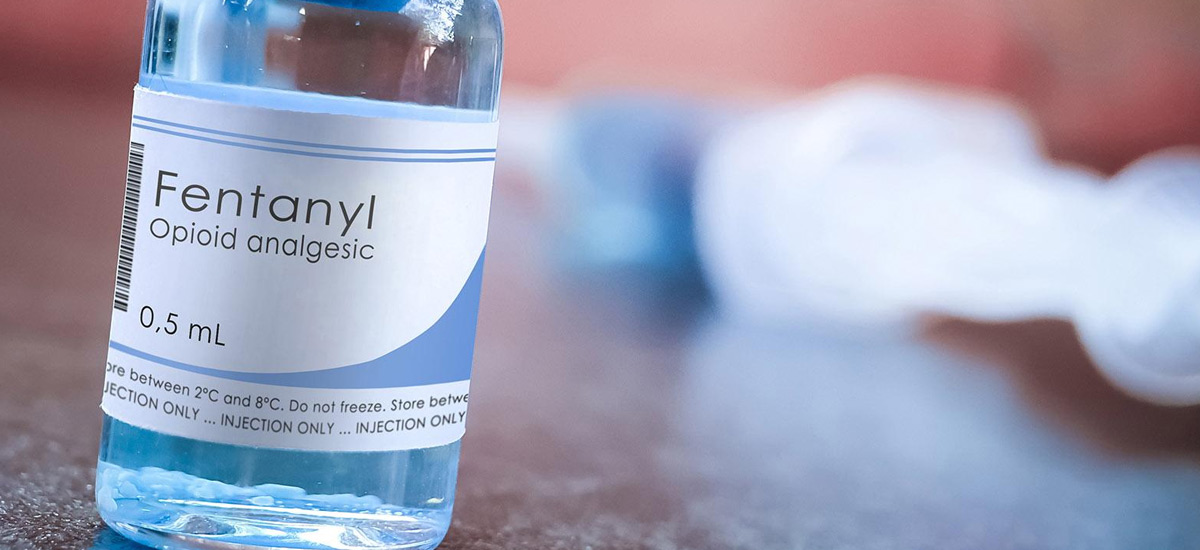by oanetwork
Share
by oanetwork
Share

What is fentanyl?
Fentanyl (aka fentanil, fentanyl citrate, acetyl fentanyl) is a synthetic (man-made) opioid pain medication with a rapid onset and a relatively short half-life, which determines the duration of action. For the more technically inclined, it is a potent agonist at the μ-opioid receptors. As such, fentanyl is generally prescribed only for patients who already have a tolerance for strong opioid pain medications.
Fentanyl was first created in 1959 by Paul Janssen, founder of pharmaceutical company Janssen Pharmaceutica, following the medical inception of pethidine (also known as meperidine, marketed as Demerol and Mepergan) several years earlier.
In the mid 90s, fentanyl was introduced for palliative use with the skin patch, followed by the introduction of the lollipop, dissolving tablets, and a sublingual spray. As of 2012, fentanyl was the most widely used synthetic opioid in medicine. In 2013, 1700 kilograms were used globally.
An agonist is a substance that acts like another substance and therefore stimulates an action. Agonist is the opposite of antagonist. Antagonists and agonists are key players in the chemistry of the human body and in pharmacology. (Medicinenet.com)
What are the legitimate, intended uses of fentanyl
Fentanyl is used to treat breakthrough pain (BTP) – sometimes called flares by doctors or flare-ups by patients – is a serious issue for people who are already trying to control chronic pain with one or more drugs. BTP is not new pain; it is a more severe occurrence of the background pain that already exists, often in cancer patients.
Trade names for fentanyl
Trade names for fentanyl include:
- Abstrol: Fentanyl sublingual tablets made by Sentynl Therapeutics, Inc. Abstral sublingual tablets are used to treat breakthrough cancer pain that is not controlled by other medicines. The sublingual tablet is placed on the floor of the mouth under your tongue (sublingual) and allowed to dissolve.
- Actiq®
- Fentora®
- Duragesic®: Transdermal skin patch
- Subsys®: Sublingual spray
Fentanyl can be divided into two categories:
- Pharmaceutical fentanyl: Prescribed mainly to manage acute and chronic pain associated with advanced cancer.
- Non-pharmaceutical fentanyl (NPF): Illicitly manufactured (mostly in Mexico, but also in China and elsewhere) and is often mixed with heroin and/or cocaine (often without the user’s knowledge) in order to increase the overall effect of the original drug.
Although pharmaceutical fentanyl can be illegally diverted for misuse, most cases of fentanyl-related morbidity and mortality have been linked to illicitly manufactured fentanyl and fentanyl analogs(3), collectively referred to as non-pharmaceutical fentanyl (NPF). NPF is sold illegally for its very strong heroin-like effect. It is frequently mixed with heroin, cocaine, and meth to increase its euphoric effects – often without the user’s knowledge. While NPF-related overdoses can be reversed with Narcan (naloxone) a higher dose or multiple doses per overdose event may be required to revive a patient due to the high potency of NPF. (CDC)
Fentanyl has been the most widely used synthetic opioid in medicine since 2012.
Technical details about fentanyl
Fentanyl was first created in 1959 by Paul Janssen, founder of pharmaceutical company Janssen Pharmaceutica, following the medical inception of pethidine (also known as meperidine, marketed as Demerol and Mepergan) several years earlier. Fentanyl then came out the following year, 1960. The widespread anesthetic use of fentanyl led to the production of fentanyl citrate, which is the salt formed by combining fentanyl and citric acid); this form of the drug entered medical use as a general anesthetic under the trade name Sublimaze in the 1960s. Following this, many other fentanyl analogues were developed and introduced into medical practice, including sufentanil, alfentanil, remifentanil, and lofentanil.
Footnotes
(1) Therapeutic index
The therapeutic index (aka TI, therapeutic ratio) is a ratio comparing (A) the amount of a drug, medicine, or other therapeutic agent that causes the therapeutic effect to (B) the amount of the drug/agent that causes toxicity. The related terms therapeutic window or safety window refer to a range of optimal doses in amounts between efficacy and toxicity levels, or the doses/amounts which achieve the desired therapeutic benefit without resulting in unacceptable toxicity or side effects. (National Institutes of Health)
One reason for the development of receptor-specific drugs is to create substances that have higher safety margins, higher differences between the median lethal dose and the median effective dose. Classically, anesthesiologists have used drugs that have low therapeutic indices, which simply means that the lethal and/or dangerous dose or concentration is close to the effective analgesic or anesthetic dose. Pentothal and meperidine are examples of drugs with low therapeutic indices. But some of the new ones—for example, fentanyl, sufentanil, alfentanil, and ketamine — have therapeutic indices that are measured in the hundreds or thousands. Of the available opioids, fentanyl has a higher therapeutic index than morphine (400 vs 70), and remifentanil has the highest therapeutic index of any opioid or anesthetic (33,000). Source: Anesthesia for the 21st century by Theodore H. Stanley, MD; National Institutes of Health
(2) Palliative care
Palliative care is a specialized form of medical care which provides relief from the stresses and symptoms and stress of serious illnesses rather than fixing or curing the root problem. The general goal of palliative care is to improve quality of life for patients and those close to them.
(3) Analogs
Resources: Biggest fentanyl busts
HELP IS AVAILABLE
Do You Have a Loved One Struggling with Addiction or Mental Health Issues?
Fentanyl is a potent synthetic opioid that is used to manage severe pain. It is also one of the most addictive drugs available, and its misuse has caused an unprecedented increase in overdose deaths in recent years. In this blog post, we will explore the addictive qualities of fentanyl and the dangers of its use […]
Fentanyl-laced heroin killing users across the nation The opiate crisis continues to snowball, in part because new versions and types of opioids and other drugs keep finding their way onto the streets – a fact that is manifestly evident across the nation as it has been for some time now. Fentanyl, a synthetic cousin […]



